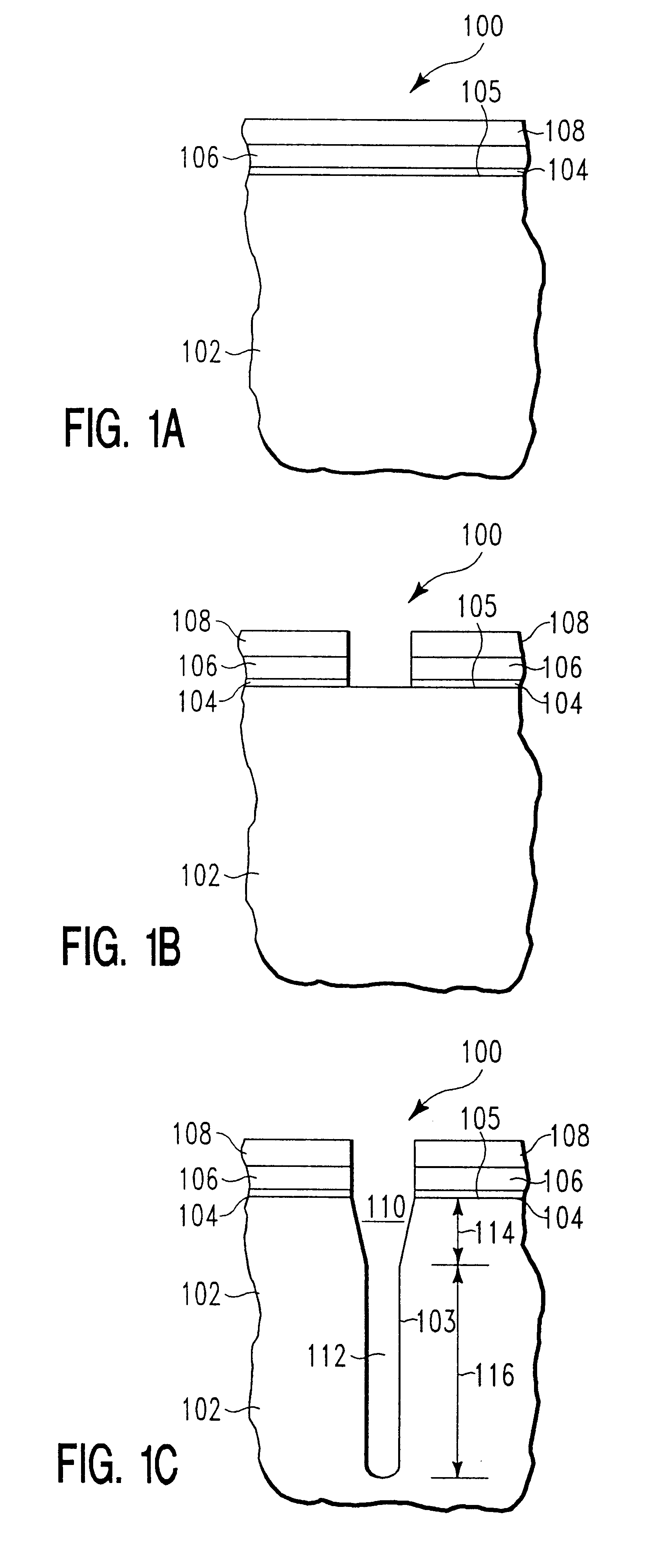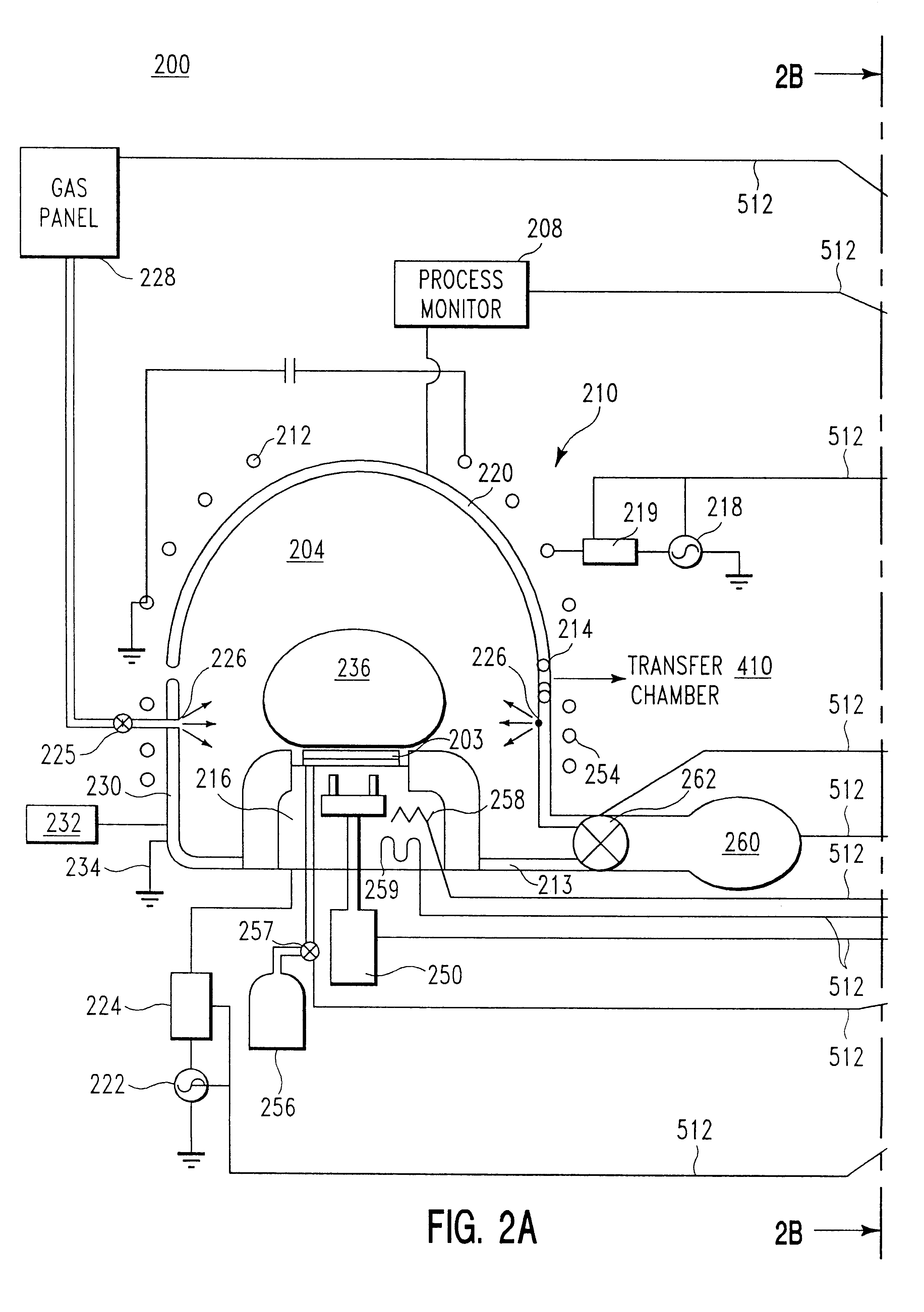Self cleaning method of forming deep trenches in silicon substrates
a deep trench and self-cleaning technology, applied in the direction of hollow article cleaning, solid-state devices, chemistry apparatus and processes, etc., can solve the problems of increasing the number of process gases required to control, introducing complexities, and reducing deposits
- Summary
- Abstract
- Description
- Claims
- Application Information
AI Technical Summary
Problems solved by technology
Method used
Image
Examples
Embodiment Construction
The method of the present invention can be implemented on a processing system having a single processing chamber. While any of a variety of processing chambers may enjoy the advantages of the present invention, the method will be described as implemented on a computer controlled HDP etching chamber 200 as illustrated and described below in FIG. 2. The present invention provides a method to etch a layer or one of a plurality the layers formed on a substrate while simultaneously removing deposits formed within the chamber from a previously processed substrate. In an embodiment of the present invention, the layer to be etched is compatible with the deposits formed within the chamber. Advantageously, processing efficiencies are realized since a single step is utilized to process a substrate while cleaning the deposits produced by processing the previous substrate. In this way, etching a layer on one substrate is combined with cleaning the residue formed from etching a previous substrate...
PUM
| Property | Measurement | Unit |
|---|---|---|
| diameter | aaaaa | aaaaa |
| diameter | aaaaa | aaaaa |
| critical diameter | aaaaa | aaaaa |
Abstract
Description
Claims
Application Information
 Login to View More
Login to View More - R&D
- Intellectual Property
- Life Sciences
- Materials
- Tech Scout
- Unparalleled Data Quality
- Higher Quality Content
- 60% Fewer Hallucinations
Browse by: Latest US Patents, China's latest patents, Technical Efficacy Thesaurus, Application Domain, Technology Topic, Popular Technical Reports.
© 2025 PatSnap. All rights reserved.Legal|Privacy policy|Modern Slavery Act Transparency Statement|Sitemap|About US| Contact US: help@patsnap.com



